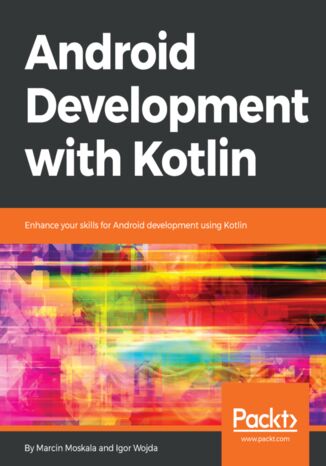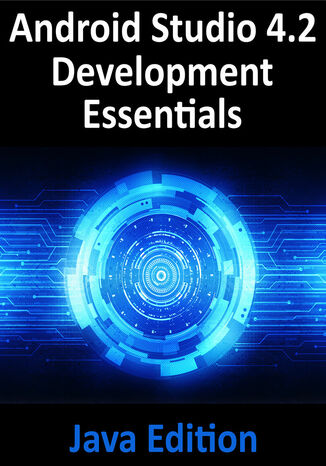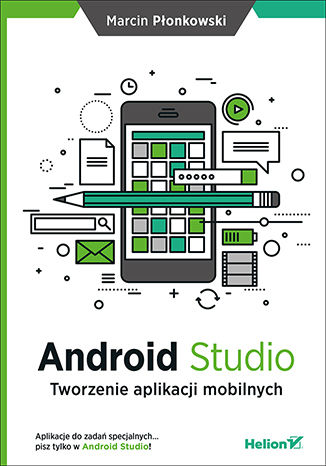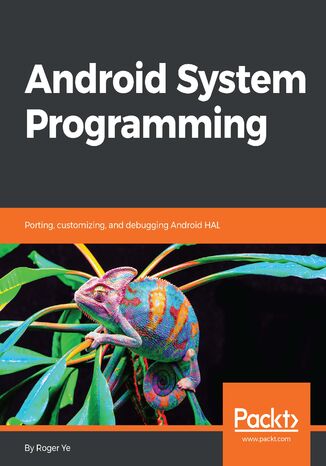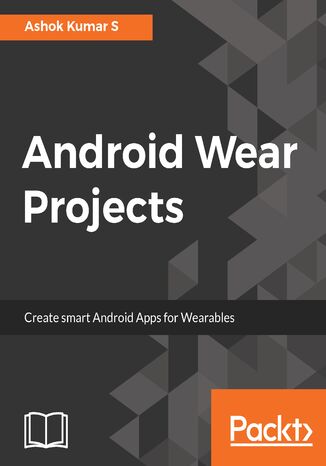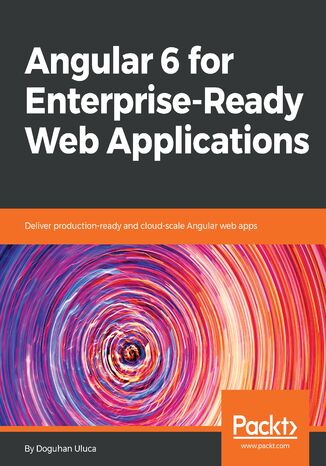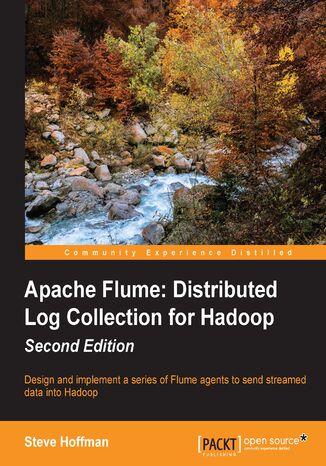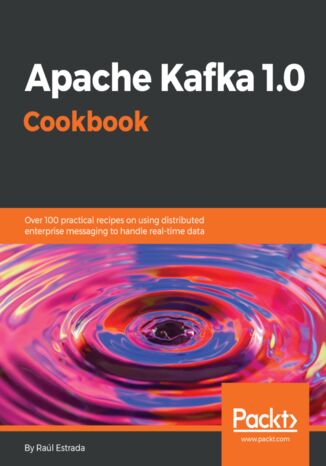Категорії
Електронні книги
-
Бізнес та економіка
- Біткойн
- Ділова жінка
- Коучинг
- Контроль
- Електронний бізнес
- Економіка
- Фінанси
- Фондова біржа та інвестиції
- Особисті компетенції
- Комп'ютер в офісі
- Комунікація та переговори
- Малий бізнес
- Маркетинг
- Мотивація
- Мультимедійне навчання
- Нерухомість
- Переконання та НЛП
- Податки
- Соціальна політика
- Порадники
- Презентації
- Лідерство
- Зв'язки з громадськістю
- Звіти, аналізи
- Секрет
- Соціальні засоби комунікації
- Продаж
- Стартап
- Ваша кар'єра
- Управління
- Управління проектами
- Людські ресурси (HR)
-
Для дітей
-
Для молоді
-
Освіта
-
Енциклопедії, словники
-
Електронна преса
- Architektura i wnętrza
- Безпека життєдіяльності
- Biznes i Ekonomia
- Будинок та сад
- Електронний бізнес
- Ekonomia i finanse
- Езотерика
- Фінанси
- Особисті фінанси
- Бізнес
- Фотографія
- Інформатика
- Відділ кадрів та оплата праці
- Для жінок
- Комп'ютери, Excel
- Бухгалтерія
- Культура та література
- Наукові та академічні
- Охорона навколишнього середовища
- Впливові
- Освіта
- Податки
- Подорожі
- Психологія
- Релігія
- Сільське господарство
- Ринок книг і преси
- Транспорт та спедиція
- Здоров'я та краса
-
Історія
-
Інформатика
- Офісні застосунки
- Бази даних
- Біоінформатика
- Бізнес ІТ
- CAD/CAM
- Digital Lifestyle
- DTP
- Електроніка
- Цифрова фотографія
- Комп'ютерна графіка
- Ігри
- Хакування
- Hardware
- IT w ekonomii
- Наукові пакети
- Шкільні підручники
- Основи комп'ютера
- Програмування
- Мобільне програмування
- Інтернет-сервери
- Комп'ютерні мережі
- Стартап
- Операційні системи
- Штучний інтелект
- Технологія для дітей
- Вебмайстерність
-
Інше
-
Іноземні мови
-
Культура та мистецтво
-
Шкільні читанки
-
Література
- Антології
- Балада
- Біографії та автобіографії
- Для дорослих
- Драми
- Журнали, щоденники, листи
- Епос, епопея
- Нарис
- Наукова фантастика та фантастика
- Фельєтони
- Художня література
- Гумор, сатира
- Інше
- Класичний
- Кримінальний роман
- Нехудожня література
- Художня література
- Mity i legendy
- Лауреати Нобелівської премії
- Новели
- Побутовий роман
- Okultyzm i magia
- Оповідання
- Спогади
- Подорожі
- Оповідна поезія
- Поезія
- Політика
- Науково-популярна
- Роман
- Історичний роман
- Проза
- Пригодницька
- Журналістика
- Роман-репортаж
- Romans i literatura obyczajowa
- Сенсація
- Трилер, жах
- Інтерв'ю та спогади
-
Природничі науки
-
Соціальні науки
-
Шкільні підручники
-
Науково-популярна та академічна
- Археологія
- Bibliotekoznawstwo
- Кінознавство / Теорія кіно
- Філологія
- Польська філологія
- Філософія
- Finanse i bankowość
- Географія
- Економіка
- Торгівля. Світова економіка
- Історія та археологія
- Історія мистецтва і архітектури
- Культурологія
- Мовознавство
- літературні студії
- Логістика
- Математика
- Ліки
- Гуманітарні науки
- Педагогіка
- Навчальні засоби
- Науково-популярна
- Інше
- Психологія
- Соціологія
- Театральні студії
- Богослов’я
- Економічні теорії та науки
- Transport i spedycja
- Фізичне виховання
- Zarządzanie i marketing
-
Порадники
-
Ігрові посібники
-
Професійні та спеціальні порадники
-
Юридична
- Безпека життєдіяльності
- Історія
- Дорожній кодекс. Водійські права
- Юридичні науки
- Охорона здоров'я
- Загальне, компендіум
- Академічні підручники
- Інше
- Закон про будівництво і житло
- Цивільне право
- Фінансове право
- Господарське право
- Господарське та комерційне право
- Кримінальний закон
- Кримінальне право. Кримінальні злочини. Кримінологія
- Міжнародне право
- Міжнародне та іноземне право
- Закон про охорону здоров'я
- Закон про освіту
- Податкове право
- Трудове право та законодавство про соціальне забезпечення
- Громадське, конституційне та адміністративне право
- Кодекс про шлюб і сім'ю
- Аграрне право
- Соціальне право, трудове право
- Законодавство Євросоюзу
- Промисловість
- Сільське господарство та захист навколишнього середовища
- Словники та енциклопедії
- Державні закупівлі
- Управління
-
Путівники та подорожі
- Африка
- Альбоми
- Південна Америка
- Центральна та Північна Америка
- Австралія, Нова Зеландія, Океанія
- Австрія
- Азії
- Балкани
- Близький Схід
- Болгарія
- Китай
- Хорватія
- Чеська Республіка
- Данія
- Єгипет
- Естонія
- Європа
- Франція
- Гори
- Греція
- Іспанія
- Нідерланди
- Ісландія
- Литва
- Латвія
- Mapy, Plany miast, Atlasy
- Мініпутівники
- Німеччина
- Норвегія
- Активні подорожі
- Польща
- Португалія
- Інше
- Przewodniki po hotelach i restauracjach
- Росія
- Румунія
- Словаччина
- Словенія
- Швейцарія
- Швеція
- Світ
- Туреччина
- Україна
- Угорщина
- Велика Британія
- Італія
-
Психологія
- Філософія життя
- Kompetencje psychospołeczne
- Міжособистісне спілкування
- Mindfulness
- Загальне
- Переконання та НЛП
- Академічна психологія
- Психологія душі та розуму
- Психологія праці
- Relacje i związki
- Батьківство та дитяча психологія
- Вирішення проблем
- Інтелектуальний розвиток
- Секрет
- Сексуальність
- Спокушання
- Зовнішній вигляд та імідж
- Філософія життя
-
Релігія
-
Спорт, фітнес, дієти
-
Техніка і механіка
Аудіокниги
-
Бізнес та економіка
- Біткойн
- Ділова жінка
- Коучинг
- Контроль
- Електронний бізнес
- Економіка
- Фінанси
- Фондова біржа та інвестиції
- Особисті компетенції
- Комунікація та переговори
- Малий бізнес
- Маркетинг
- Мотивація
- Нерухомість
- Переконання та НЛП
- Податки
- Соціальна політика
- Порадники
- Презентації
- Лідерство
- Зв'язки з громадськістю
- Секрет
- Соціальні засоби комунікації
- Продаж
- Стартап
- Ваша кар'єра
- Управління
- Управління проектами
- Людські ресурси (HR)
-
Для дітей
-
Для молоді
-
Освіта
-
Енциклопедії, словники
-
Електронна преса
-
Історія
-
Інформатика
-
Інше
-
Іноземні мови
-
Культура та мистецтво
-
Шкільні читанки
-
Література
- Антології
- Балада
- Біографії та автобіографії
- Для дорослих
- Драми
- Журнали, щоденники, листи
- Епос, епопея
- Нарис
- Наукова фантастика та фантастика
- Фельєтони
- Художня література
- Гумор, сатира
- Інше
- Класичний
- Кримінальний роман
- Нехудожня література
- Художня література
- Mity i legendy
- Лауреати Нобелівської премії
- Новели
- Побутовий роман
- Okultyzm i magia
- Оповідання
- Спогади
- Подорожі
- Поезія
- Політика
- Науково-популярна
- Роман
- Історичний роман
- Проза
- Пригодницька
- Журналістика
- Роман-репортаж
- Romans i literatura obyczajowa
- Сенсація
- Трилер, жах
- Інтерв'ю та спогади
-
Природничі науки
-
Соціальні науки
-
Науково-популярна та академічна
-
Порадники
-
Професійні та спеціальні порадники
-
Юридична
-
Путівники та подорожі
-
Психологія
- Філософія життя
- Міжособистісне спілкування
- Mindfulness
- Загальне
- Переконання та НЛП
- Академічна психологія
- Психологія душі та розуму
- Психологія праці
- Relacje i związki
- Батьківство та дитяча психологія
- Вирішення проблем
- Інтелектуальний розвиток
- Секрет
- Сексуальність
- Спокушання
- Зовнішній вигляд та імідж
- Філософія життя
-
Релігія
-
Спорт, фітнес, дієти
-
Техніка і механіка
Відеокурси
-
Бази даних
-
Big Data
-
Biznes, ekonomia i marketing
-
Кібербезпека
-
Data Science
-
DevOps
-
Для дітей
-
Електроніка
-
Графіка / Відео / CAX
-
Ігри
-
Microsoft Office
-
Інструменти розробки
-
Програмування
-
Особистісний розвиток
-
Комп'ютерні мережі
-
Операційні системи
-
Тестування програмного забезпечення
-
Мобільні пристрої
-
UX/UI
-
Веброзробка, Web development
-
Управління
Подкасти
Java
Android Development with Kotlin. Enhance your skills for Android development using Kotlin
Nowadays, improved application development does not just mean building better performing applications. It has become crucial to find improved ways of writing code. Kotlin is a language that helps developers build amazing Android applications easily and effectively. This book discusses Kotlin features in context of Android development. It demonstrates how common examples that are typical for Android development, can be simplified using Kotlin. It also shows all the benefits, improvements and new possibilities provided by this language.The book is divided in three modules that show the power of Kotlin and teach you how to use it properly. Each module present features in different levels of advancement. The first module covers Kotlin basics. This module will lay a firm foundation for the rest of the chapters so you are able to read and understand most of the Kotlin code. The next module dives deeper into the building blocks of Kotlin, such as functions, classes, and function types. You will learn how Kotlin brings many improvements to the table by improving common Java concepts and decreasing code verbosity. The last module presents features that are not present in Java. You will learn how certain tasks can be achieved in simpler ways thanks to Kotlin.Through the book, you will learn how to use Kotlin for Android development. You will get to know and understand most important Kotlin features, and how they can be used. You will be ready to start your own adventure with Android development with Kotlin.
Android Studio is an Integrated Development Environment based on the JetBrains IntelliJ IDEA. It provides developers with a unique platform to design and develop Android apps using various developer tools. The new Android Studio 4.2 has an upgraded IntelliJ platform and a variety of new features designed to improve the productivity of Android app developers. Fully updated for Android Studio 4.2, the objective of this book is to help you master the skills necessary to develop Android applications using Java as the programming language.This book begins by outlining the steps necessary to set up an Android development and testing environment and introducing programming in Java, describing data types, flow control, functions, lambdas, and object-oriented programming. It includes an overview of Android Studio, covering areas such as tool windows, the code editor, and the Layout Editor tool. An introduction to Android architecture is followed by an in-depth explanation of the design of Android applications and user interfaces using the Android Studio environment.Early chapters detail Android Architecture components like view models, lifecycle management, Room database access, the Database Inspector, app navigation, live data, and data binding. Advanced topics such as intents are also covered, as are touch screen handling, gesture recognition, and the recording and playback of audio. You will also explore printing, transitions, cloud-based file storage, and foldable device support.Detailed descriptions of the concepts of material design are provided, including the use of floating action buttons, Snackbars, tabbed interfaces, card views, navigation drawers, and collapsing toolbars. Some key features of Android Studio 4.2 and Android discussed in-depth include the Layout Editor, the ConstraintLayout and ConstraintSet classes, MotionLayout Editor, view binding, constraint chains, barriers, and direct reply notifications. Later chapters cover advanced features of Android Studio such as App Links, Dynamic Delivery, the Android Studio Profiler, Gradle build configuration, and submitting apps to the Google Play Developer Console.
Android Studio. Tworzenie aplikacji mobilnych
Aplikacje do zadań specjalnych... pisz tylko w Android Studio! Czy umiesz sobie wyobrazić świat urządzeń cyfrowych, w którym nagle zabrakło Androida? Czy wiesz, jak wiele codziennych czynności okazałoby się wówczas nie do zrobienia? Przez kilka ostatnich lat Android niepostrzeżenie ulokował się we wszystkich smartfonach czy tabletach, a aplikacje pisane dla tego systemu służą nam wszędzie: w kinie, w sklepie, na biwaku, na nartach i u lekarza. I wciąż potrzebujemy nowych! Jeśli chcesz dołączyć do grona innowacyjnych kreatorów, tworzących aplikacje ułatwiające i uprzyjemniające codzienne życie setek milionów ludzi, czym prędzej zapoznaj się z możliwościami Android Studio! To pozwoli Ci szybko zacząć przygodę z Javą i efektywnie pisać dobre programy. Dzięki informacjom zawartym w tej książce uda Ci się szybko opanować podstawy pracy w Android Studio. Dowiesz się, jak zainstalować środowisko programistyczne, utworzyć i dopracować interfejs użytkownika, stosować tematy i style, generować komunikaty, wprowadzać elementy wizualne i multimedialne. Poznasz sposoby dodawania funkcjonalności, zobaczysz, jak zapewnić zapisywanie i odtwarzanie danych. Na końcu książki umieszczono dodatek, w którym znajdziesz także skróty klawiaturowe i informacje o szablonach. Na co czekasz? Czas wreszcie przekuć Twoje pomysły w prawdziwe aplikacje. Android czeka na Ciebie! Poznajemy Android Studio Podstawy tworzenia interfejsu użytkownika Style i tematy Aktywności i fragmenty Powiadomienia Praca z komponentami interfejsu użytkownika Obrazy i animacje Zapisywanie i odczytywanie danych Usprawnienia w pisaniu kodu Zainspiruj się Androidem!
Android System Programming. Porting, customizing, and debugging Android HAL
Android system programming involves both hardware and software knowledge to work on system level programming. The developers need to use various techniques to debug the different components in the target devices. With all the challenges, you usually have a deep learning curve to master relevant knowledge in this area. This book will not only give you the key knowledge you need to understand Android system programming, but will also prepare you as you get hands-on with projects and gain debugging skills that you can use in your future projects.You will start by exploring the basic setup of AOSP, and building and testing an emulator image. In the first project, you will learn how to customize and extend the Android emulator. Then you’ll move on to the real challenge—building your own Android system on VirtualBox. You’ll see how to debug the init process, resolve the bootloader issue, and enable various hardware interfaces. When you have a complete system, you will learn how to patch and upgrade it through recovery. Throughout the book, you will get to know useful tips on how to integrate and reuse existing open source projects such as LineageOS (CyanogenMod), Android-x86, Xposed, and GApps in your own system.
Android Wear Projects. Create smart Android Apps for Wearables
Android Wear Projects is your opportunity to step into the exciting new world of Android Wear app development. This book will help you to master the skills in Android Wear programming and give you a complete insight on wear app development.You will create five different Android Wear apps just like the most popular Android Wear apps. You will create a To-do list, a city maps app, a Wear messenger, Wear fitness tracker and Watch face. While you create these apps you will learn to create custom notifications, receive voice inputs in notifications, add pages to notifications and stack notifications. You will see how to create custom wear app layouts, the custom UIs specially designed for Wear. You will learn to handle and manage data and syncing data with other devices, create interactive Watch faces and also ensure the safety and security of your Wear apps by testing and securing your apps before you deploy them on the app store.
Angular 6 for Enterprise-Ready Web Applications follows a hands-on and minimalist approach demonstrating how to design and architect high quality apps.The first part of the book is about mastering the Angular platform using foundational technologies. You will use the Kanban method to focus on value delivery, communicate design ideas with mock-up tools and build great looking apps with Angular Material. You will become comfortable using CLI tools, understand reactive programming with RxJS, and deploy to the cloud using Docker.The second part of the book will introduce you to the router-first architecture, a seven-step approach to designing and developing mid-to-large line-of-business applications, along with popular recipes. You will learn how to design a solid authentication and authorization experience; explore unit testing, early integration with backend APIs using Swagger and continuous integration using CircleCI. In the concluding chapters, you will provision a highly available cloud infrastructure on AWS and then use Google Analytics to capture user behavior.By the end of this book, you will be familiar with the scope of web development using Angular, Swagger, and Docker, learning patterns and practices to be successful as an individual developer on the web or as a team in the Enterprise.
Apache Kafka provides a unified, high-throughput, low-latency platform to handle real-time data feeds. This book will show you how to use Kafka efficiently, and contains practical solutions to the common problems that developers and administrators usually face while working with it. This practical guide contains easy-to-follow recipes to help you set up, configure, and use Apache Kafka in the best possible manner. You will use Apache Kafka Consumers and Producers to build effective real-time streaming applications. The book covers the recently released Kafka version 1.0, the Confluent Platform and Kafka Streams. The programming aspect covered in the book will teach you how to perform important tasks such as message validation, enrichment and composition.Recipes focusing on optimizing the performance of your Kafka cluster, and integrate Kafka with a variety of third-party tools such as Apache Hadoop, Apache Spark, and Elasticsearch will help ease your day to day collaboration with Kafka greatly. Finally, we cover tasks related to monitoring and securing your Apache Kafka cluster using tools such as Ganglia and Graphite.If you're looking to become the go-to person in your organization when it comes to working with Apache Kafka, this book is the only resource you need to have.

